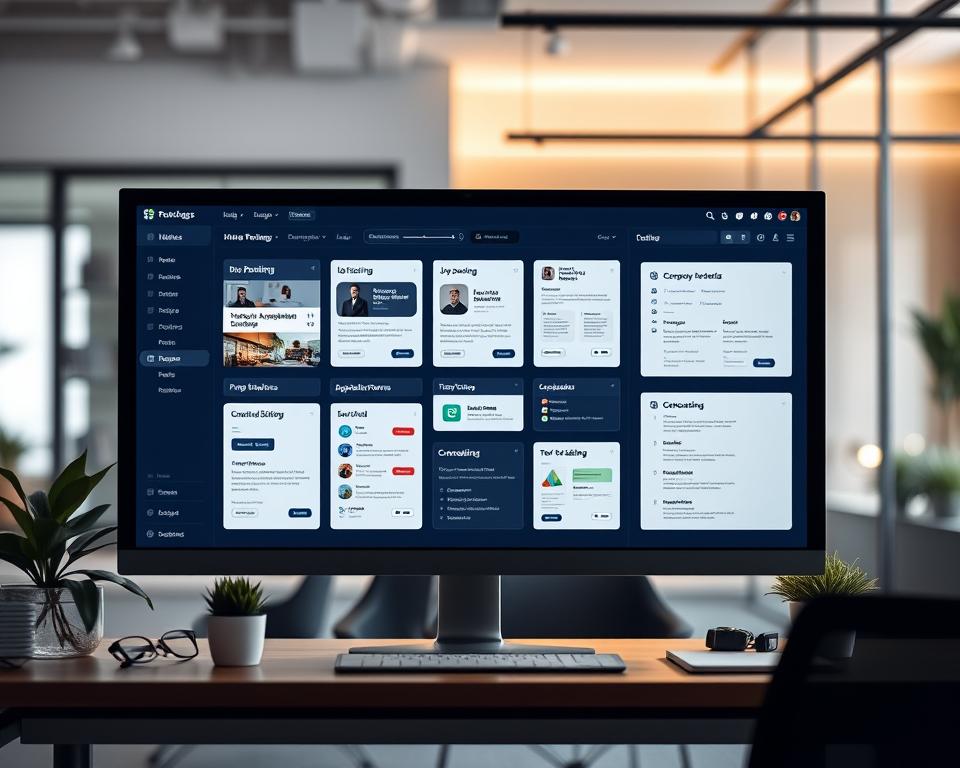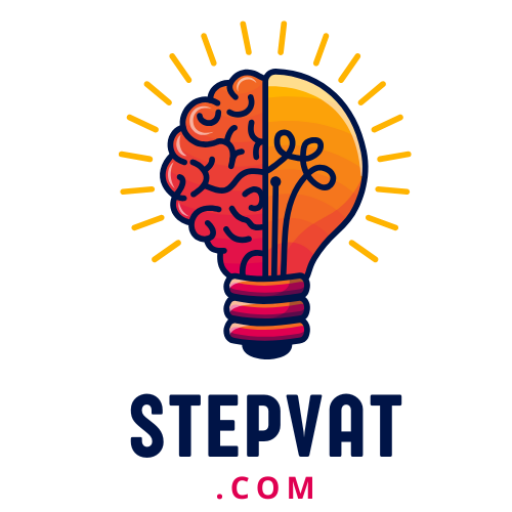Anúncios
What if one clear setup could cut your screening time and bring better candidates faster?
This guide shows how a modern hiring process uses smart forms, quizzes, and assessments to rank applicants automatically and keep people informed. You’ll learn when a specific template fits your needs and when to tweak it so your team spends time on the right people, not on repetitive tasks.
We’ll walk through career pages, resume intake funnels, salary tools, and role-aligned quizzes that reduce manual review. Expect practical checklists and examples you can copy, plus tips for writing clear job posts that attract qualified candidates without jargon.
By the end, you’ll have a repeatable plan that protects fairness, speeds publishing, and helps your recruitment process run with less rework.
Introduction: Why Ready-to-Use Templates Matter in Hiring Today
Hiring process consistency helps you launch each job faster while keeping clarity, fairness, and a steady candidate experience.
Candidate expectations in 2025 focus on clear role duties, salary ranges, benefits, flexibility, and predictable timelines. Indeed reports show 52% of jobseekers weigh description quality heavily, and 83% cite benefits as a major acceptance factor. Those figures explain why transparency now drives recruitment outcomes.
Structured posting frameworks cut manual rework and align your team. They make it easier to answer candidates’ questions with consistent information across postings. This guide walks through job posting structure, application funnels, assessments, salary calculators, and compliance-minded practices you can adapt for your company.
Templates speed the process but still need judgment. Collaborate with hiring managers, respect local laws, and treat each template as a living document that evolves with feedback and market data. Consult HR counsel when adapting forms for regulated roles.
What this guide covers and how to use it responsibly
- Practical structures for career pages, applications, and screening flows.
- Role-aligned assessments and salary tools that improve candidate experience.
- Actionable steps for publishing clear, fair job postings and running an organized process.
Ready-to-Use Templates to Accelerate Your Job Openings
A clear application flow that scores and tags submissions saves hours in every cycle. Use funnel-based templates that score and rank candidates against your screening criteria so your team meets the best fit earlier in the hiring process.
- Recruitment Funnel Template: AI-driven scoring, knockout questions, and dashboard summaries for fast screening.
- Career Page Template: Showcase roles, company story, and clear CTAs with automated email updates for applicants.
- Resume Collection Form: Centralize submissions, tag by role and experience, and speed collaboration.
Quizzes, assessments, and calculators
Add a Career Quiz or Job Recommendation flow to match candidates with roles and attract top passive talent. Offer a Salary Range Calculator so candidates see benchmarked ranges early and expectations align before interviews.
“Short, mobile-first forms with progress indicators cut drop-off and improve completion rates.”
Keep the process fair and transparent. Validate skills with job assessments and marketing knowledge quizzes. Review funnel data and iterate on screening elements so your recruitment process improves each cycle.
Build a High-Converting Career Page and Job Posting Flow
A simple, scannable career page with strong CTAs turns visits into quality applications. Start by grouping openings by function and location so candidates find relevant roles fast. Describe company culture in plain language and add a short note from a hiring manager or an employee quote to humanize the page.
Include benefits and salary ranges where appropriate; that builds trust and lowers churn during the application process. Use an Apply button that opens a short form and triggers automated follow-ups from your Career Page Template.
Posting templates for LinkedIn and major job boards
Tailor a core job posting for LinkedIn and Indeed while keeping the same key information: title, mission summary, responsibilities, must-haves vs. nice-to-haves, salary range, benefits, and clear application steps.
- Keep titles simple and searchable for platforms with large audiences—LinkedIn (52M weekly seekers) and Indeed (350M+ monthly visitors).
- Compress images, use short paragraphs, and add internal links to job descriptions for mobile-first readers.
- Track views, clicks, and completions and iterate headlines and CTAs based on analytics.
“Concise, culture-aligned messaging up front increases response.”
The Must-Have Components of a 2025 Job Posting Template
Start every posting with a crisp mission statement that shows how the role moves the team and customers forward.
Role clarity and responsibilities
Define the role’s core purpose in one sentence. Then list 5–7 priority responsibilities in order. Add expected outcomes for the first 90 days so candidates see immediate focus and fit.
Must-haves vs. nice-to-haves
Separate essential skills and experience from preferred ones. This helps qualified candidates apply and prevents unnecessary filtering. Use short bullet lists and simple wording.
Pay, benefits, and location
Include a transparent salary range, a brief benefits overview, and the location or remote-work policy. Clear numbers and policies cut confusion and improve candidate experience.
Inclusive language and accessibility
Use plain, ADA-aware phrasing. Avoid jargon, gendered terms, and age-coded words. Offer accessibility instructions for applicants who need accommodations.
Application instructions and process
Tell candidates what to submit, where to apply, and the expected timeline. Note what happens after submission and list any deal-breaker questions (work authorization, availability, required certification).
Keep formatting consistent across postings so the hiring manager does not omit important fields.
- Short company purpose and culture blurb that links the role to customers and team.
- Link to the career page and a concise job description PDF for internal alignment.
- Close with a friendly call to action and a brief note on review timelines and next steps.
Top Platforms Offering Hiring Templates and Workflows
Choose platforms that match how your team plans, runs, and measures every hiring step. Below are practical overviews of leading tools, their typical use cases, and considerations so you can pick what fits your recruitment scale and goals.

Visual planning: Miro and Slatebox
Miro and Slatebox give you shared boards for mapping sourcing, screening, interviews, and offers in real time. Use these when you need a clear visual of stages and stakeholder ownership.
Process automation: Pipefy and Kissflow
Pipefy and Kissflow handle stage triggers, approvals, and reporting. They scale well for high-volume recruitment and standardize handoffs across hiring managers.
Form-first intake: Jotform
Jotform builds mobile-friendly applications with drag-and-drop fields and integrations. Pick it when you want clean applicant data feeding your workflow quickly.
Document kits: Template.net, DocHub, SampleFormats.org
Download baseline templates from Template.net or SampleFormats.org to draft job posting and supporting forms fast. Use DocHub for offers, NDAs, and e-signatures stored in the cloud.
Policy and structure: Workable and Lattice
Workable and Lattice offer hiring guides and manager-facing checklists that help keep processes fair and compliant. They work best when you want consistent templates and review standards across the company.
- Match visual tools for alignment, workflow engines for automation, and form-first tools for fast application capture.
- Start on free tiers, consolidate data, and revisit settings quarterly to refine automations and templates.
Design a Recruitment Funnel That Filters and Engages
Design your funnel so every step filters for fit while keeping candidates informed and engaged. Start with a short, mobile-friendly application and add more checks as interest grows.
From application to offer: scoring, routing, and updates
Build clear stages: application, screening, assessment, interview, and offer. For each stage set routing rules that move applicants forward or flag them for review.
Use weighted scoring on must-have questions so the system highlights the best fits. Send automated updates at triggers so every applicant knows what happens next.
Using quizzes and job recommendations to reduce drop-off
Add a short career quiz or a job recommendation tool that suggests roles based on skills and interests. These small interactions improve engagement and lower abandonment.
- Keep the initial application minimal, then request details later.
- Track drop-off points and fix long forms or slow pages.
- Standardize evaluation with a template so interview feedback compares fairly.
- Review funnel metrics monthly and tune scores and stage durations.
“Clear routing and timely updates turn an opaque process into a respectful experience for applicants.”
Use Assessments to Validate Skills Before Interviews
Good assessments separate guesswork from evidence and let you test real skills before an interview. Keep the process short, job-focused, and transparent so candidates complete tasks with confidence.
Role-aligned tests: technical, marketing, and general aptitude
Pick assessments that mirror daily work: coding exercises for engineers, portfolio tasks for designers, and a marketing knowledge quiz for marketing roles.
Combine a brief situational or aptitude check when it matters for decision-making. Automated scoring works well for objective questions.
Ranking candidates fairly with structured scorecards
Use a standard assessment template and a clear scorecard so reviewers rate the same criteria. That reduces bias and speeds hiring decisions.
- Keep tests short but predictive of on-the-job performance.
- Share format, time limits, and submission steps up front.
- Integrate results into your recruitment funnel so interviewers see scores and samples before conversations.
“Automated scoring and structured reviews make screening fairer and faster.”
Set Expectations with a Salary Range Calculator and Clear Benefits
A simple salary tool and benefit summary guide expectations and speed alignment between hiring teams and candidates. Use a calculator that factors in title, experience, and location so you publish realistic ranges that match budgets and market norms.
Benchmark ranges by title, experience, and location
Start with a salary range template that pulls benchmarks for the job and experience band. Calibrate with recent hires and public salary data so the numbers reflect your market.
Align budget, expectations, and candidate fit
Share a range in the job posting when appropriate. Pair pay with a short benefits summary—healthcare, retirement, PTO, and flexible options—to show total compensation.
- Capture expectations early: ask applicants their compensation range in the application to spot alignment sooner.
- Document location rules: note any regional adjustments so candidates see how offers are set.
- Train hiring teams: give consistent phrasing so candidates receive clear, matching messages.
Update ranges regularly and check internal equity when you revise numbers. For practical help on building pay frameworks, see determine employee compensation.
Embed DEIB, Compliance, and Accessibility into Templates
Design your process so fairness and access are visible parts of each job posting and application step. Make this a checklist the whole hiring team follows for every role.
Structured interviews and bias-mitigating practices
Use structured interview guides with consistent questions and scoring rubrics. That helps reviewers compare candidates fairly across the same role.
Train hiring managers on bias interrupters: disciplined note-taking, independent ratings, and scorecards before group talk. Standardize feedback forms and calibrate ratings regularly.
Inclusive wording, ADA-aware content, and transparent criteria
Write clear, inclusive job description copy that invites applicants from diverse backgrounds. Include essential functions, reasonable accommodations info, and a plain-language equal opportunity statement.
- Make content accessible: clear headings, readable contrast, and assistive tech support.
- Publish transparent evaluation criteria so candidates know how fit and skills are judged.
- Document process steps and review template language quarterly with HR and legal advisors.
“Structured interviews and consistent scoring reduce bias and keep the process fair for all applicants.”
Measure What Works: Metrics, Automation, and Continuous Improvement
Track the right signals and your recruitment process will reveal where to act first. Start small: pick a few metrics that map to real decisions and use automated reports to spot trends.
Track time-to-hire, source effectiveness, and completion rates
Measure time-to-hire from posting to offer so you can find bottlenecks and set realistic targets. Compare by role family and by posting channel.
Count hires and hire quality from each source rather than raw volume. That improves ad spend for future job posting efforts.
Monitor application start and completion rates. A falling completion rate often signals friction in the form or page layout.
Automated notifications, reminders, and status updates
Use workflow tools like Pipefy or Kissflow for real-time reporting and routing. Integrate Jotform submissions so all applicant information lands in one place.
- Send automated email confirmations and interview reminders to reduce no-shows.
- Standardize feedback forms and scorecards so you can compare performance across cycles.
- Build dashboards by role family that show pipeline health, stage aging, and decision speed.
- Run quarterly A/B tests on subject lines and email copy to improve open and response rates.
Close the loop: run post-hire reviews that compare assessment scores with on-the-job performance. Document changes and update your template library so lessons become part of the hiring process.
“Automated updates and clear metrics turn vague steps into measurable improvements.”
Conclusion
You now have a clear structure for publishing a concise job posting, building a short application, and validating skills before the interview. These elements cut review time and raise the chance of finding top talent.
Reuse and refine each template so the hiring process gets faster while keeping quality high. Keep candidates informed with timely updates, inclusive language, and ADA-aware content.
Align expectations early by publishing salary ranges and benefits. Track metrics to find friction, improve handoffs across your team, and update your template library as you learn.
Adapt this guidance to your company culture, market, and compliance needs. For compensation or legal questions, consult HR counsel, accountants, financial advisors, or lawyers—this is educational, not advice.



